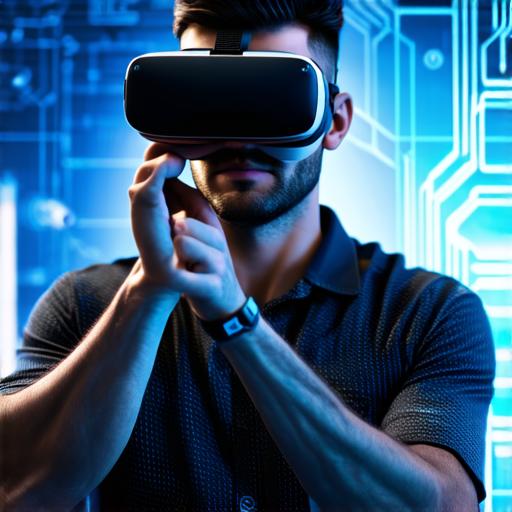The Early Beginnings
The concept of immersive computing can be traced back to 1960s when Ivan Sutherland created “Skywriter,” a system that allowed users to draw on a virtual surface using a light pen. However, it was not until the 1980s that VR technology began to take shape in earnest.
In 1984, Shuichi Nakamura and Yutaka Kurata created the first VR headset, known as the “Oculus,” which used a cathode ray tube (CRT) display and two sensors to track movement.
In 1986, Jaron Lanier, an American computer scientist, coined the term “virtual reality” in his book “Virtual Reality: A New Field of Art.” This marked the beginning of the mainstream recognition of VR technology. Later that year, Silicon Graphics, a leading computer manufacturer at the time, showcased its first VR system, known as the “Dome,” at the Computerworld Expo in San Francisco.
The 1990s: The Dawn of Commercial Applications
By the early 1990s, VR technology had made significant strides in terms of hardware and software development. In 1991, Sega released the “Virtual Reality System,” which was designed for gaming applications. Meanwhile, computer scientists at the University of Illinois developed a VR system known as “Nature’s Computer,” which allowed users to explore virtual environments using a headset and gloves equipped with sensors.
As the 1990s progressed, more companies began to invest in VR technology. In 1994, Nintendo launched its first VR console, the “Virtual Boy.” However, it was ultimately unsuccessful due to its limited hardware capabilities and high cost. Despite this setback, the potential of VR as a commercial application could not be ignored.
The Turning Point: The Launch of the Oculus Rift

In 2012, Facebook co-founder Palmer Luckey launched the Kickstarter campaign for the Oculus Rift, a revolutionary VR headset that promised to bring immersive virtual experiences to the masses. The campaign quickly became one of the most successful in Kickstarter history, raising over $2 million in funding and generating widespread excitement about the future of VR technology.
In 2014, the Oculus Rift finally hit the market, and it was an instant success. Its innovative features, including a high-resolution display, low latency, and a wide field of view, set it apart from other VR headsets at the time. The launch of the Oculus Rift marked a turning point in the history of VR technology, paving the way for widespread adoption and commercial applications.
The Evolution of VR Technology
Since its inception, VR technology has continued to evolve at a rapid pace. In 2016, HTC launched the Vive Pro, which featured a higher resolution display and improved tracking capabilities. Meanwhile, Sony released the PlayStation VR, which brought VR gaming to the mainstream audience.
In recent years, advancements in artificial intelligence (AI) and machine learning have allowed for more advanced virtual environments and interactive experiences. The development of haptic technology has also enabled users to feel physical sensations within virtual worlds, further enhancing the immersive experience.
The Future of VR Technology
As VR technology continues to evolve, it is likely that we will see even more innovative applications and uses for this technology. From healthcare to education, VR has the potential to revolutionize numerous industries and transform the way we interact with the world around us.
However, there are also concerns about the potential negative impacts of VR on society, including addiction and isolation. As with any new technology, it is important to approach VR with caution and consider its potential risks and benefits.
